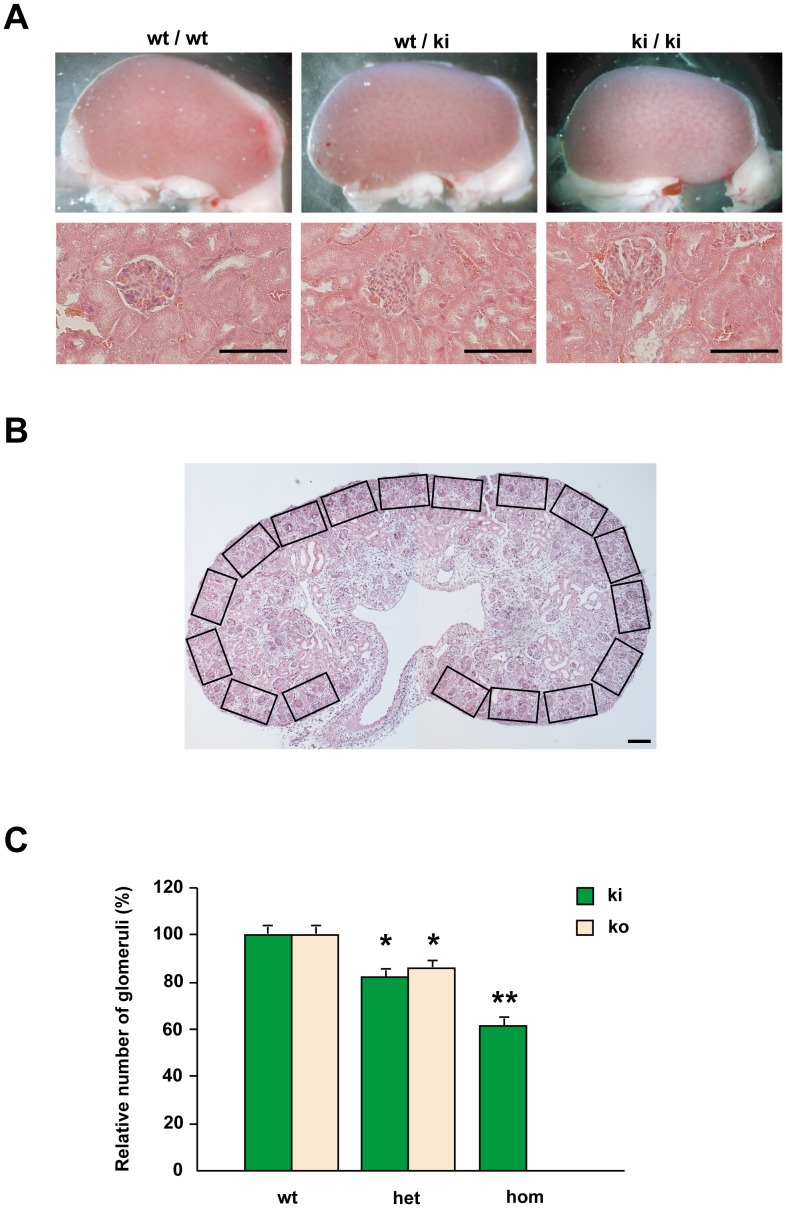Figure 5. Morphology of kidneys.
A) Kidneys from wild-type and mutant mice did not reveal any alterations in overall appearance two month after birth. Likewise, no difference was observed on paraffin sections stained with H&E. Bar = 100 µm. B) Example of a thin section stained with H&E to demonstrate the strategy used to determine the number of glomeruli in kidney samples of E17.5. The number of glomeruli within each rectangle was counted under higher power magnification. Subsequently, the number of glomeruli per mm2 was calculated for each sample. C) Statistical analysis of the number of glomeruli in wild-type, heterozygous and homozygous kidneys at E17.5. Numbers are given in relation to the numbers of wild-type kidneys that were arbitrarily set to 100%. Homozygous FgfrL1ΔC-GFP, heterozygous FgfrL1ΔC-GFP and heterozygous FgfrL1 knock-out mice showed a slight, but significant reduction in the total number of glomeruli (* p<0.05 Student's t-test). The numbers of individual kidneys, which were analyzed in this fashion, were: wild-type (for knock-in littermates) 7, wild-type (for knock-out littermates) 5, heterozygous knock-in 17, heterozygous knock-out 7, homozygous knock-in 8. Homozygous knock-out animals do not develop any metanephric kidneys. Note that number of kidneys equals number of animals since only one kidney per animal was used for analysis.

